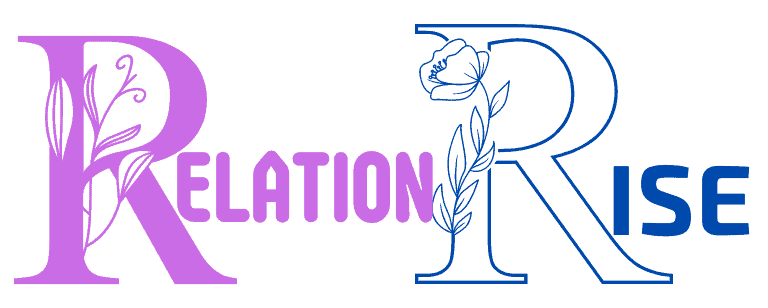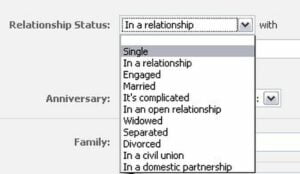What Does It Mean When My Computer Says Trust Relationship
When your computer says “Trust Relationship,” it means there is an issue with the connection between the computer and the domain controller. This can happen when the computer’s machine account password does not match the password stored on the domain controller.
This error can occur for various reasons, such as a computer being inactive for an extended period, a change in the computer’s domain membership, or a problem with the domain controller itself. Resolving this issue typically requires re-establishing the trust relationship between the computer and the domain controller, often by removing and rejoining the computer to the domain.
It’s essential to address this problem promptly to ensure seamless access to domain resources and services.
What Is A Trust Relationship Error?
A trust relationship error typically occurs within a networked environment, particularly in the context of Active Directory domains. When a computer says “trust relationship error,” it means that the secure channel between the computer and the domain has been disrupted or corrupted. This issue can hinder a user’s ability to log in to the computer using their domain credentials, thereby impeding productivity. Understanding the nature of this error and its potential causes is crucial for swift resolution.
Definition Of Trust Relationship Error
At its core, a trust relationship error refers to the breakdown of trust between a computer and the domain to which it belongs. In a Windows-based network, this trust is established through the Active Directory domain, where the computer’s identity and permissions are managed. If this trust relationship is compromised, the computer may no longer recognize the domain’s authority, leading to authentication issues and access restrictions.
Causes Of Trust Relationship Error
The trust relationship error can stem from various factors, including:
- Computer password changes not being synchronized with the domain controller
- Time synchronization discrepancies between the computer and the domain controller
- Computer account deletion and re-joining the domain without properly disjoining first
- Corruption or misconfiguration of the computer’s secure channel relationship with the domain
In any of these scenarios, the trust relationship error manifests as an obstacle to seamless network access, necessitating troubleshooting and resolution to restore reliable connectivity.
Symptoms Of Trust Relationship Error
When your computer encounters a trust relationship error, it can exhibit various symptoms that impact its functionality and user experience. Understanding these signs and indicators is crucial for prompt detection and resolution of trust relationship issues.
Common Signs And Indicators
Below are some of the common symptoms that indicate a trust relationship error:
- Failure to log in to the domain
- Unexpected account lockouts
- Access denied to network resources
- Disruption in group policy application
Impact On System Performance
Trust relationship errors can significantly affect the overall performance of the computer, leading to:
- Decreased access to shared network resources
- Authentication failures resulting in user productivity loss
- Increased security risks due to compromised domain trust
Resolving Trust Relationship Error
When your computer displays a message about a trust relationship error, it typically indicates an issue with the secure connection between the computer and the domain. This can occur when the computer’s domain account password differs from the password stored on the domain controller, leading to authentication problems. Resolving the trust relationship error is essential to ensure smooth system operation and security. Below are the steps, best practices, and tools for fixing this error.
Steps To Troubleshoot Trust Relationship Error
- Check the status of the computer account in the Active Directory Users and Computers console.
- If the computer account appears as disabled, enable it and reset the computer account in Active Directory.
- If the issue persists, remove the computer from the domain, restart the computer, and then re-add it to the domain.
Best Practices For Fixing The Error
- Regularly monitor the status of computer accounts in the Active Directory to detect and address trust relationship issues promptly.
- Ensure that the computer and domain controller have synchronized time settings, as inconsistencies can lead to trust relationship errors.
Tools And Resources For Resolving Trust Relationship Error
Utilize the following tools and resources to effectively address trust relationship errors:
| Tool/Resource | Description |
|---|---|
| Active Directory Users and Computers console | Allows for the management and troubleshooting of computer accounts in the Active Directory environment. |
| Windows PowerShell | Provides command-line tools to automate and streamline the process of inspecting and repairing trust relationship errors. |
| Microsoft Remote Server Administration Tools (RSAT) | Enables remote management of Windows-based servers, including Active Directory, to diagnose and resolve trust relationship issues. |
Preventing Trust Relationship Error
When your computer displays a “trust relationship” error message, it indicates a disruption in the trust between the computer and the domain it belongs to. This issue can occur when the secure channel between the computer and the domain controller is broken or disrupted, leading to login problems and access issues.
Proactive Measures To Avoid Trust Relationship Error
To prevent trust relationship errors, proactive measures can be taken to maintain the secure channel between the computer and the domain. Establishing a proactive approach can help mitigate potential disruptions and ensure smooth network operations.
Best Practices For Maintaining Trust Relationships
Maintaining trust relationships involves regular checks and updates to ensure the secure channel remains intact. Implementing best practices can help safeguard the trust relationship, minimizing the risk of errors and access issues.
Importance Of Regular System Maintenance
Regular system maintenance is crucial in ensuring the continuous integrity of trust relationships. Performing routine checks, updates, and monitoring can help identify and address potential issues, maintaining the trust relationship between the computer and the domain.
Impact Of Trust Relationship Error
When your computer displays a “trust relationship” error, it means the connection between the computer and the domain has been compromised. This can happen if the computer’s trust credentials are no longer valid, often due to password sync issues or account changes.
Resolving this error typically involves re-establishing the trust relationship between the computer and the domain.
Impact of Trust Relationship Error When the trust relationship between a computer and its domain is broken, it can have significant repercussions on the system’s functionality and security. The trust relationship error is a common issue faced by IT administrators and users in a domain environment. Understanding the impact of this error is crucial for mitigating risks and ensuring system stability.Consequences Of Neglecting Trust Relationship Issues
Neglecting trust relationship issues can lead to a range of adverse consequences, affecting both the user experience and the overall security of the system. Some potential outcomes of ignoring trust relationship errors include:- Failure to authenticate users or computers within the domain.
- Disruption of access to domain resources and services.
- Risk of unauthorized access to sensitive data.
- Deterioration of system performance and reliability.
Mitigating Risks And Ensuring System Stability
To mitigate the risks associated with trust relationship errors and maintain system stability, proactive steps must be taken. Some essential strategies for addressing trust relationship issues include:- Promptly resolving trust relationship errors through domain rejoining or utilizing PowerShell scripts.
- Regularly monitoring and managing trust relationships within the domain environment.
- Implementing robust password policies and authentication protocols to enhance security.
- Leveraging automated tools for detecting and addressing trust relationship issues.
Frequently Asked Questions For What Does It Mean When My Computer Says Trust Relationship
What Does It Mean When A Computer Says “trust Relationship”?
If your computer displays this message, it could indicate a lost connection to the domain.
How To Fix The “trust Relationship” Issue On My Computer?
You can re-establish the trust relationship by removing and re-joining the computer to the domain.
What Are The Common Causes Of “trust Relationship” Errors?
Mismatched computer passwords or inactive computer accounts can cause trust relationship issues.
Can “trust Relationship” Errors Affect Network Access?
Yes, if the trust relationship between the computer and the domain is broken, it can impact network access.
Is It Possible To Prevent “trust Relationship” Errors From Occurring?
Regularly updating computer passwords and monitoring account activity can help prevent trust relationship errors.
Conclusion
Understanding the trust relationship error on your computer is crucial for maintaining a secure network. By recognizing the causes and implementing the appropriate solutions, you can effectively manage the trust relationship between the computer and the domain. With the right knowledge and proactive approach, you can ensure the smooth functioning of your computer system.



